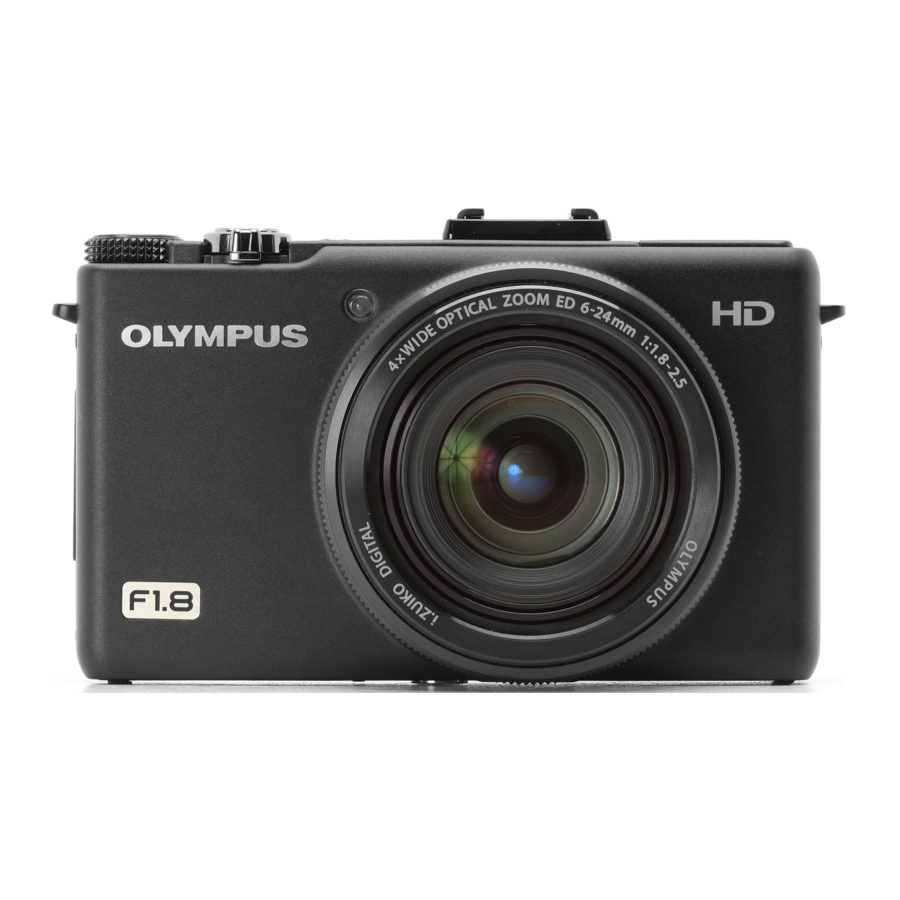Olympus XZ-1 Руководство по советам и рекомендациям - Страница 16
Просмотреть онлайн или скачать pdf Руководство по советам и рекомендациям для Цифровая камера Olympus XZ-1. Olympus XZ-1 30 страниц. Body black
Также для Olympus XZ-1: Технические характеристики (5 страниц)

XZ-1 Tips
page 16 of 29
3.) Hit (in order) Up, Down, Left, Right, Shutter, Up
4.) Hit Right to see your shutter count R is the shutter count. S is the flash count. There's
different info on each of the directions although I don't know if they mean anything
useful for the XZ-1.
Just turn the camera off when you're done.
Filters
I carry a circular Polarizer in my right shirt pocket, along with a spare battery and an
older Pen VF-1 optical viewfinder. But lets go further. Following are quotes from an
article by Joseph Wisniewski, about why we still need to use 'film days' glass filters in the
snew digital age. Interesting!
The Polarizer
This is so obvious I shouldn't need to get into "why" you need it, but I'm me, and that
means I'm going to talk about it anyway. Any time light moves from air to a transparent
substance, some of the light doesn't penetrate into the transparent substance and is
reflected away. Whether the light hits water on a lake, the natural oil on human skin, clear
cellulose and wax on plant leaves and flowers, lacquer on a car or a guitar, or glass on a
building, there are reflections. The reflections are "white light"; they "fill in" the color
and reduce saturation. They reduce the detail visible under the clear substance. The blue
of the sky is also polarized, and a polarizer can deepen the blue, and keep it from blowing
out and rendering your sky a cloudless white or a drab gray.
You can fight this with post processing, but you won't win. When you boost saturation,
you fix the things that were "robbed" of contrast, but you also oversaturate the things that
weren't suffering from contrast robbing reflections. And you can't replace the lost detail.
The 80A "Color Balancing" Filter
Most cameras have sensors that are "daylight balanced". They have nice, balanced red,
green, and blue channel responses in neutral colored scenes lit by daylight. They achieve
their incandescent white balance by amplifying the blue channel over two full stops
relative to the red channel. That adds a great deal of noise to the blue channel, so you see
